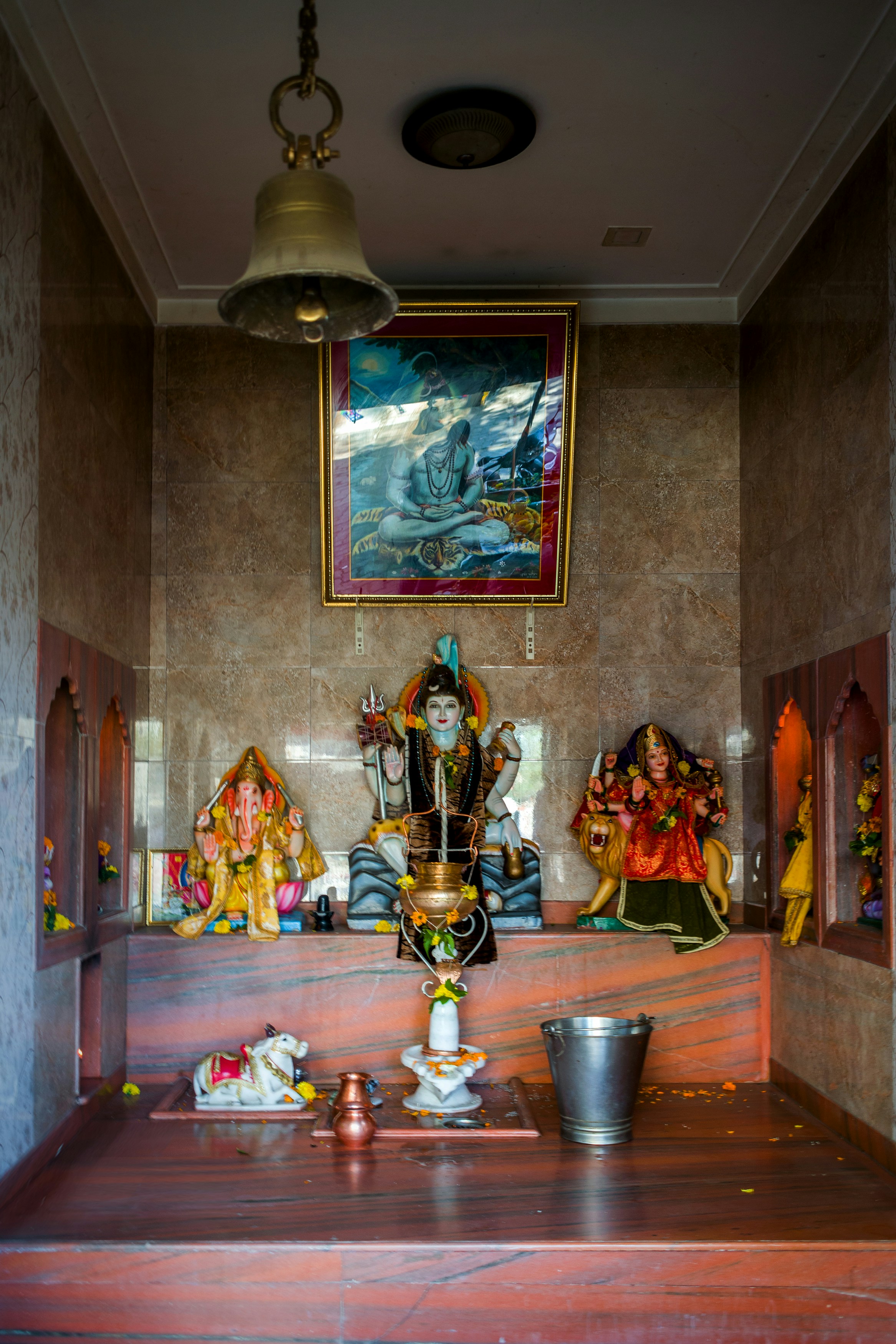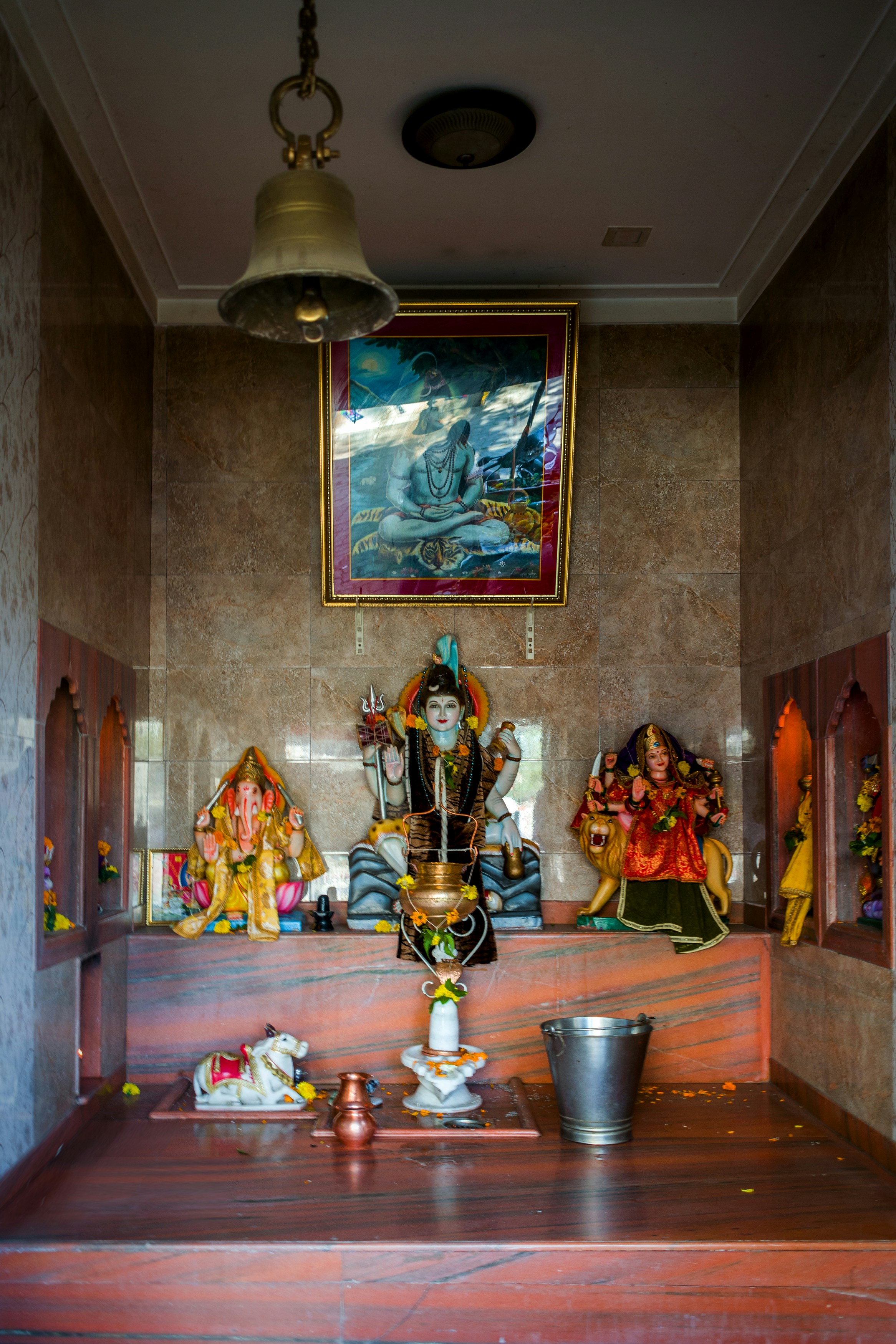The Shri Kedarnath Temple, dedicated to Lord Shiva, is considered one of the twelve Jyotirlingas, which are believed to be the most sacred abodes of Lord Shiva. The temple is located in the Rudraprayag district of Uttarakhand, at an altitude of 3,583 meters above sea level. It is believed to have been built by the Pandavas, the heroes of the Hindu epic Mahabharata, around 1000 BCE.
The journey to the Shri Kedarnath Temple is not for the faint-hearted. It involves a trek of approximately 16 kilometers from Gaurikund, the base camp. The trek is a test of endurance and faith, as devotees have to navigate through steep and rugged terrain, crossing rivers and streams along the way. However, the arduous journey is rewarded with breathtaking views of the surrounding mountains and the sense of accomplishment upon reaching the temple.
As you approach the temple, you can feel the aura of spirituality and divinity in the air. The sound of bells and chants fills the atmosphere, creating an atmosphere of devotion and reverence. The temple itself is a masterpiece of ancient architecture, with intricate carvings and sculptures depicting various deities and mythological figures.
Inside the temple, the main deity is Lord Kedarnath, in the form of a lingam, which is a symbol of Lord Shiva. The lingam is believed to be self-manifested and is considered extremely powerful. Devotees offer prayers and perform rituals to seek the blessings of Lord Kedarnath.
Visiting the Shri Kedarnath Temple is not just a religious pilgrimage; it is a spiritual journey that connects you with the divine. The serene and tranquil surroundings of the temple provide the perfect setting for introspection and self-reflection. Many people believe that a visit to the temple can cleanse the soul and bring inner peace.
Outside the temple, there are several other attractions that are worth exploring. The Vasuki Tal, a pristine lake surrounded by snow-capped peaks, is a popular spot for trekking and camping. The Chorabari Tal, also known as Gandhi Sarovar, is another beautiful lake located near the temple. It is believed to be the place where Mahatma Gandhi’s ashes were immersed.
Overall, a visit to the Shri Kedarnath Temple is a once-in-a-lifetime experience that leaves a lasting impression on your mind and soul. It is a journey of faith, devotion, and self-discovery. Whether you are a religious person or not, the spiritual energy of the temple is bound to touch your heart and leave you with a sense of awe and wonder.
The Shri Kedarnath Temple holds immense significance not only for its religious importance but also for its historical and cultural value. The temple is believed to have been built by the Pandavas, the heroes of the epic Mahabharata, around 1000 BCE. Its ancient architecture and intricate carvings are a testament to the rich heritage of the region and attract thousands of devotees and tourists every year.
Aside from its architectural beauty, the temple holds a deep spiritual significance for Hindus. It is believed that visiting the temple and seeking the blessings of Lord Shiva can cleanse one’s soul and bring about spiritual enlightenment. The journey to the temple is considered a test of one’s devotion and endurance, as it involves a steep trek through rugged terrain and unpredictable weather conditions.
Furthermore, the Shri Kedarnath Temple is closely associated with the Hindu epic Mahabharata. According to legend, the Pandavas, after emerging victorious in the Kurukshetra war, sought the blessings of Lord Shiva to absolve themselves of the sins committed during the war. Lord Shiva, however, was not willing to meet them directly and took the form of a bull to hide from them. The Pandavas eventually found him in Kedarnath and received his blessings, thus establishing the temple as a place of great spiritual significance.
Today, the temple stands as a symbol of faith and devotion for millions of Hindus worldwide. It serves as a reminder of the enduring power of spirituality and the importance of seeking divine blessings in one’s life. The annual pilgrimage to the Shri Kedarnath Temple is a cherished tradition for devotees, who undertake the arduous journey to pay their respects to Lord Shiva and seek his blessings for prosperity and well-being.
In addition to its religious and historical significance, the Shri Kedarnath Temple also holds ecological importance. The temple is situated in the Garhwal Himalayas, a region known for its pristine beauty and rich biodiversity. The surrounding mountains, valleys, and rivers are home to a wide variety of flora and fauna, making it a haven for nature lovers and adventure enthusiasts. The temple authorities have taken several measures to preserve the fragile ecosystem of the region, including strict regulations on waste management and eco-friendly practices.
In conclusion, the Shri Kedarnath Temple is not just a place of worship but a symbol of devotion, spirituality, and cultural heritage. Its majestic architecture, spiritual significance, and ecological importance make it a must-visit destination for anyone seeking a deeper connection with the divine and a closer understanding of the rich tapestry of Indian culture and traditions.
The restoration of the Shri Kedarnath Temple was a massive undertaking that required meticulous planning and execution. After the devastating floods, the government of Uttarakhand launched a comprehensive rehabilitation and reconstruction project to restore the temple and the surrounding infrastructure.
The first step in the restoration process was to assess the damage and develop a detailed plan for reconstruction. Experts from various fields, including architecture, engineering, and archaeology, were brought in to evaluate the structural integrity of the temple and determine the best course of action. It was decided that the temple would be rebuilt using traditional construction techniques and materials to preserve its historical and cultural significance.
The reconstruction work began with the clearing of debris and the strengthening of the foundation. Skilled craftsmen and artisans were employed to recreate the intricate carvings and sculptures that adorned the temple. Every effort was made to ensure that the new structure closely resembled the original temple, while also incorporating modern safety features to withstand future natural disasters.
As the reconstruction progressed, the government also focused on improving the infrastructure in the surrounding area. Roads, bridges, and other amenities were constructed to facilitate the pilgrimage to the temple. The local community played a crucial role in the restoration efforts, providing support and assistance to the workers and pilgrims.
Finally, after years of dedicated work, the Shri Kedarnath Temple was reopened to the public in 2019. The restored temple stands as a symbol of resilience and faith, attracting thousands of devotees from all over the world. It serves as a reminder of the power of collective effort and the determination to preserve our cultural heritage.
After spending some time in the temple, pilgrims can also explore the surrounding areas and take in the natural beauty of the region. The temple is located in the midst of the Garhwal Himalayas, surrounded by lush green forests, gushing rivers, and breathtaking views. This makes it an ideal destination for nature lovers and adventure enthusiasts.
There are several trekking routes and trails that lead to various scenic spots near the temple. One popular trek is the Vasuki Tal trek, which takes you to a pristine glacial lake located at an altitude of 4,150 meters. The trek offers panoramic views of the surrounding peaks and is a great way to experience the raw beauty of the Himalayas.
Another attraction near the temple is the Chorabari Tal, also known as Gandhi Sarovar. This holy lake is believed to be the place where Lord Shiva imparted knowledge to the Pandavas. The lake is surrounded by snow-capped mountains and offers a peaceful and serene atmosphere for meditation and reflection.
For those seeking a more adventurous experience, there are opportunities for rock climbing, rappelling, and river rafting in the nearby rivers. The adrenaline rush of these activities combined with the spiritual aura of the temple creates a unique and exhilarating experience.
After a day of exploring and adventure, pilgrims can unwind and relax in the nearby hot springs. The hot springs are believed to have medicinal properties and offer a rejuvenating experience. Taking a dip in the warm waters is not only soothing for the body but also for the soul.
Overall, visiting the Shri Kedarnath Temple is not just a religious pilgrimage but a holistic experience that combines spirituality, adventure, and natural beauty. It is a journey that touches the heart and leaves a lasting impression on the mind.
Accommodation and Facilities
For the convenience of the pilgrims, there are several accommodation options available near the Shri Kedarnath Temple. These range from budget guesthouses to luxury hotels, providing a comfortable stay for visitors. It is advisable to book your accommodation in advance, especially during the peak pilgrimage season.
The budget guesthouses offer basic amenities such as clean rooms, shared bathrooms, and simple meals. They are a popular choice for budget-conscious travelers who prioritize affordability over luxury. These guesthouses are usually located within walking distance of the temple, making it convenient for pilgrims to visit the shrine multiple times during their stay.
On the other hand, luxury hotels provide a more lavish experience with spacious rooms, private bathrooms, and a wide range of amenities. These hotels often have in-house restaurants, spas, and fitness centers, allowing guests to relax and rejuvenate after a long day of pilgrimage. Some hotels even offer stunning views of the surrounding Himalayan peaks, adding to the overall experience.
Aside from accommodation, the temple complex also provides basic facilities to cater to the needs of the pilgrims. Clean drinking water is available throughout the complex to ensure that visitors stay hydrated during their visit. Public toilets are conveniently located, maintaining cleanliness and hygiene for all visitors.
In case of any medical emergencies, there is a medical assistance center within the temple complex. Trained medical professionals are available to provide immediate care and assistance to pilgrims in need. This ensures that pilgrims can seek medical help without having to leave the temple premises.
For those looking to take a piece of the pilgrimage experience back home, there are various shops near the temple complex that sell souvenirs and religious artifacts. These shops offer a wide range of items, including idols, prayer beads, and other religious paraphernalia. Visitors can also indulge in the local cuisine by visiting the eateries located near the temple. These eateries serve traditional Garhwali dishes, giving pilgrims a taste of the local flavors.
It is important to note that the weather in the Kedarnath region can be unpredictable, even during the summer months. Therefore, it is advisable to carry warm clothing, including jackets, sweaters, and shawls, to protect yourself from sudden temperature drops. This will ensure that you stay comfortable and enjoy your pilgrimage without any discomfort due to the weather.
Enter your email to get the Latest Updated Exploring News and Topics
Discover more from atozexplore.com
Subscribe to get the latest posts sent to your email.







